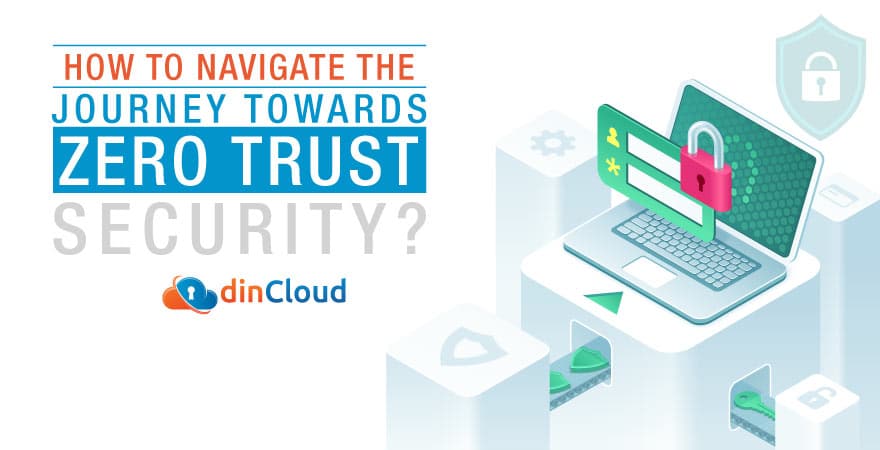The present cyber space is quite hostile and things have not been all that good earlier as well. However, with every passing day, cyber security is gaining paramount importance and its implications are constantly broadening.

For this very reason, organizations lately have started giving security a lot more priority. In the realm of security, you must have heard the concept of Zero Trust. In this post, we will touch upon this crucial aspect and also explain the journey towards this model.
Related: How to Manage IT Related Security Risks in 2021?
What is Zero Trust Security?
The philosophy behind zero trust is that no one can be awarded access to enterprise data, network or other organizational resources without establishing the person’s identity beyond doubt. Secondly, this has to happen each and every time access is awarded.
While this may seem too difficult to pull off, we agree that it will add a certain degree of extra effort on the part of your human resources. Still, the mid to long term benefits of zero trust will greatly outweigh the apparent extra effort or time spent on it.
Now, let’s briefly discuss how you should embark on the journey towards zero trust security and that too, in the logically correct sequence.
Related: 4 Security Risks of Windows and How to Prevent Them
Mapping Your Data and Network
This is the first step towards zero trust security, in which you will outline your critical data and network resources that deserve this high level of protection. This will result in identifying security periphery and parameters, and this is a good starting point.
Employee Experience is Critical
You can’t have multiple user or access management solutions crammed into one space. This may create in-consistencies and also add to architectural complexity. Managing your entire zero trust security posture from a single solution is the best approach.
When going for this security model, you will also have to keep employee experience as a top priority. The zero trust solution should not be so complicated that it suddenly becomes a drag on employee productivity, otherwise people may figure out ways around it.
Related: Post Pandemic Priorities for Cyber Security
Identify Security Gaps
This is where you will have to accept the loopholes and vulnerabilities in the present system with an open heart as well as mind. This is the stage where you draw a sketch of where you presently are in terms of security, and what your ultimate destination is.
Related: dinCloud Beefs Up Its Cyber Security Posture Amidst Covid-19
Authenticate End Users via Multiple Parameters
The mechanisms of Two-Factor or Multi-Factor Authentication (2FA & MFA) will go a long way in solidifying your security posture. 2FA or MFA is very effective in case of credential theft, such as user passwords etc.
If your zero trust posture also includes additional layers of end user authentication that are based on dynamic factors such as time bound One Time Passwords (OTPs), they will act as a strong line of defense even if there is some degree of security breach.
Rely on Experts with Built-In Security
Most enterprises often rush to security specialists or experts in the aftermath of a security incident. By that time, the best they can do for you is damage control, as the initial in-roads have already been made into your sensitive digital assets.
Secondly, it is always preferable that you go for technology platforms that have zero trust security protocols built into the service itself. This will not only be a cost efficient option, but will also save you a lot of administrative headaches.
Related: Work from Home and Cloud Security Challenges
Micro Segment Your Network
This is less of a zero trust approach and more of a risk mitigation strategy. By segmenting your entire network on the basis of users, their roles, access requirements or any other applicable criteria, you will be creating smaller security barriers or checkpoints.
Such a move will immensely help you in containing the impact of cyber security incidents, in the odd chance that they do actually happen. If done with proper planning, micro segmentation of the network can also improve network performance and reduce latency.
Conclusion
The most important concept about Zero Trust Security is that its less of a destination and more of a journey. In the cyber space, things are moving so fast that what may be relevant today may have a different meaning tomorrow. So, this is a constant process.
At dinCloud, we secure our cloud infrastructure via some of the best Two Factor Authentication (2FA) solutions out there. Please feel free to Contact Us for any further details about our security or leading cloud solutions.


